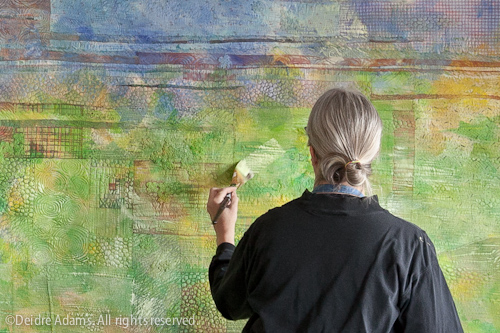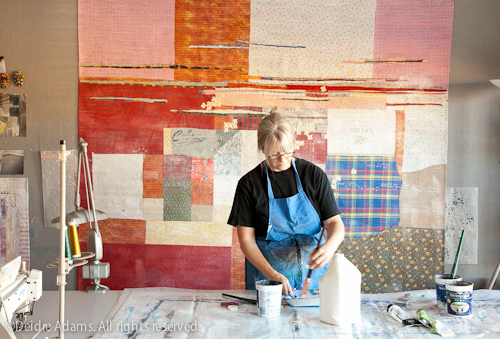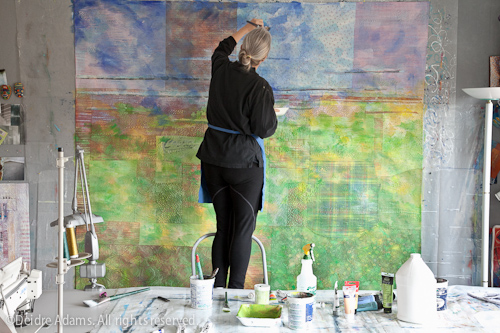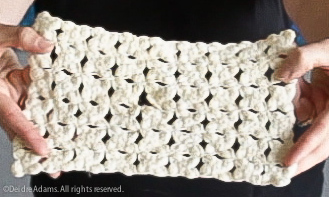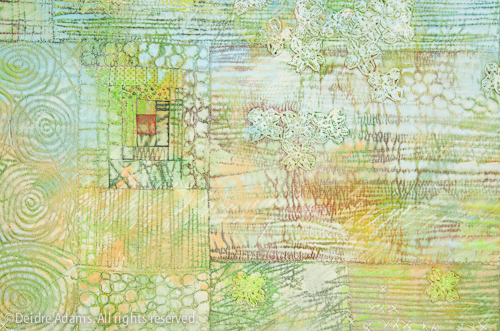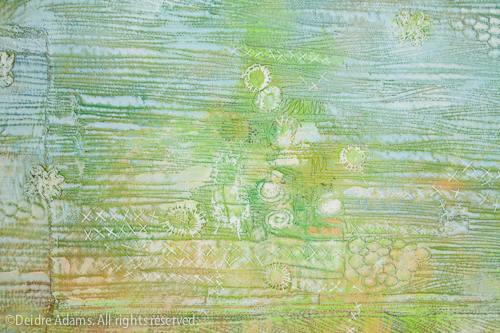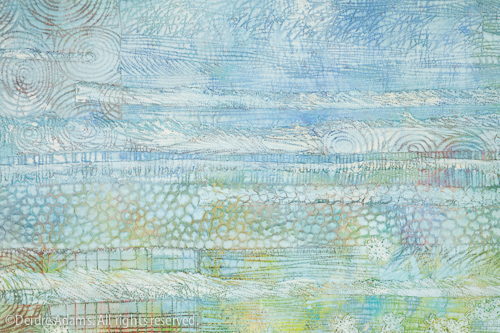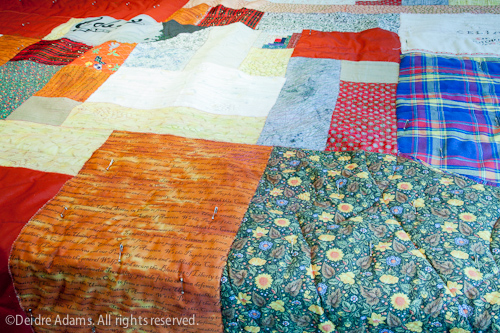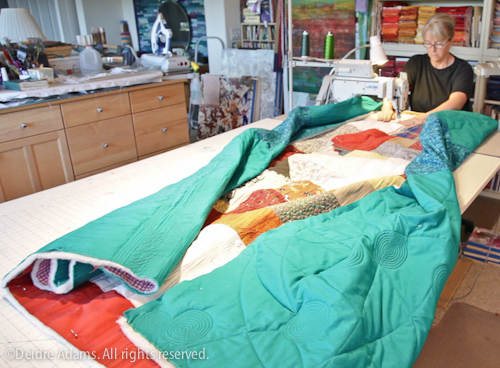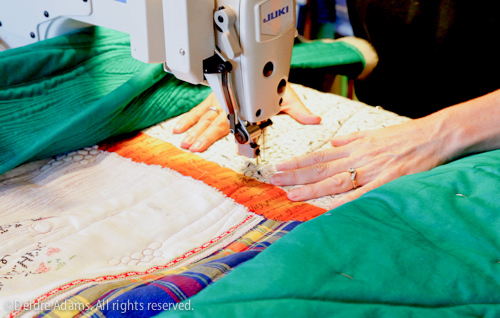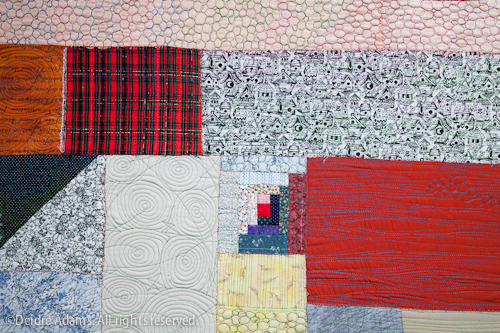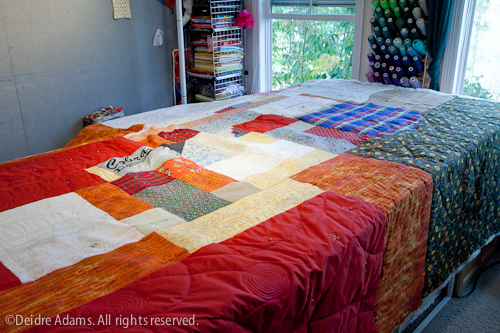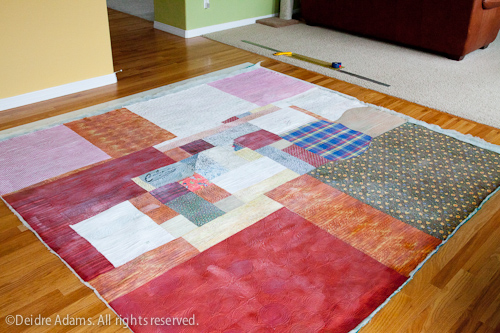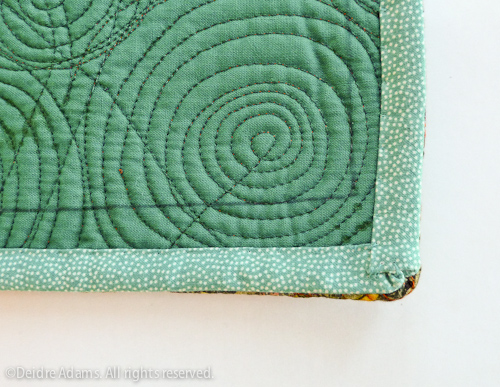Evolution of a commission – part 6
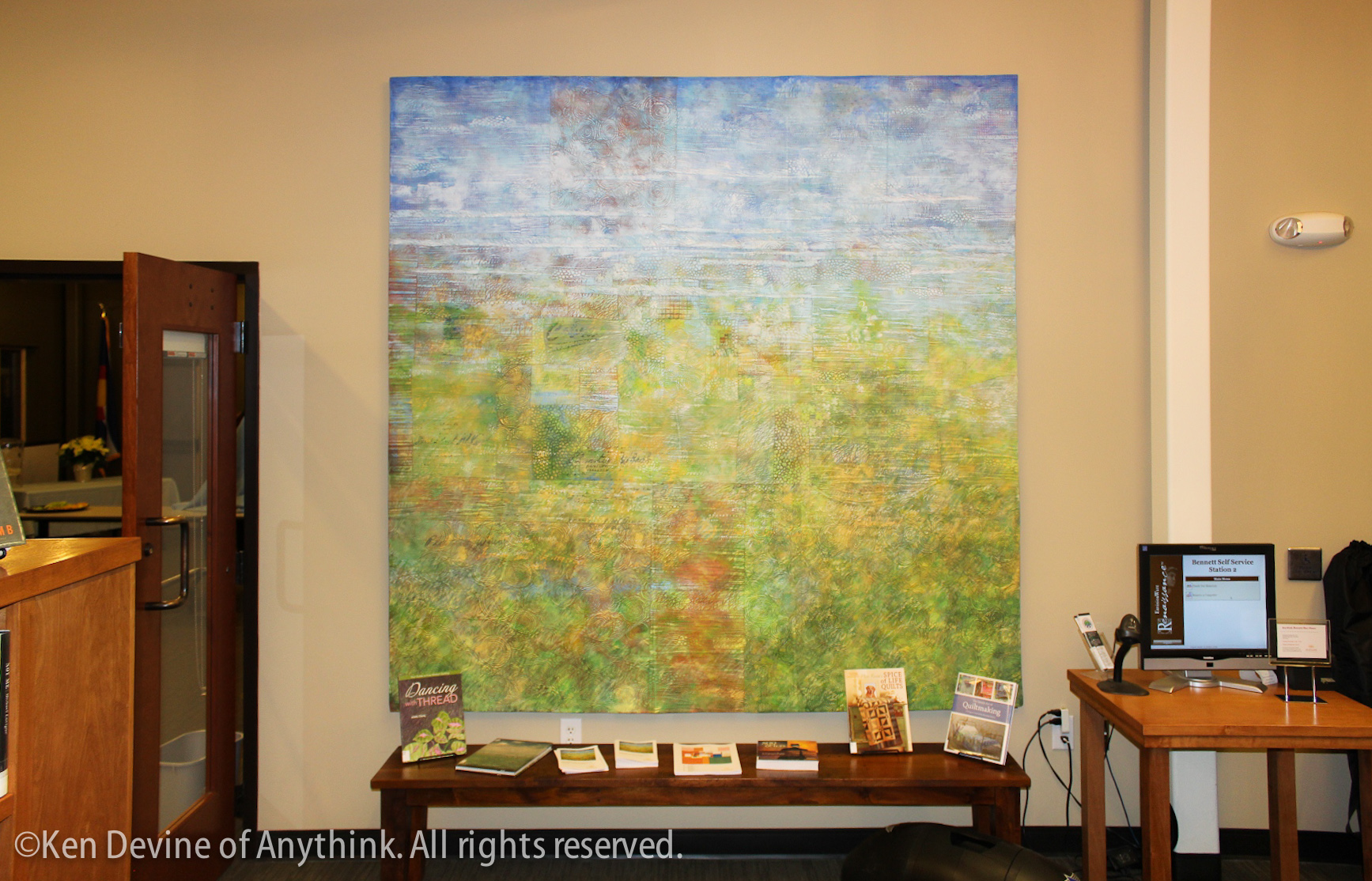 Horizon XVIII: Plainsong
Horizon XVIII: Plainsong
90 x 90 inches, acrylic paint on stitched textile – installed at AnyThink Library, Bennett, Colorado
Hanging a textile piece can be done any number of ways. Some people like to frame them, but I’ve decided that that particular aesthetic doesn’t appeal to me. I believe a textile should be free to assert its own identity, and it shouldn’t be forced to pretend it’s a painting just because that’s what people are used to. The wrong kind of frame (too ornate, or calling too much attention to itself) can also, in my opinion, reduce a textile piece to functioning as mere decoration, looking like something you might find mass produced for display in a model home. Of alternative hanging methods, probably the most common involves stitching a sleeve to the back to accommodate a wooden or metal slat which can then be nailed to the wall. This allows the piece to hang free, and it’s what I usually do for my larger pieces.
However, this particular piece needed something more substantial. For another commission I did a couple of years ago, I had custom canvases built to size and stitched the pieces to them. This worked great for 36×36-inch pieces, but due to the sheer size of the current one, the ultimate problem of transportation ruled out that idea. So I enlisted the help of my very resourceful husband, and here’s what we came up with.
 This frame is built of light-weight but sturdy 1×2 (actual measurements .75 x 1.5 inches) hardwood. It was preprimed, so painting it black was very easy. The frame was built in two sections that bolt together, which meant we could fit it into our old Ford Explorer for transport. Library facilities men attached it to the wall.
This frame is built of light-weight but sturdy 1×2 (actual measurements .75 x 1.5 inches) hardwood. It was preprimed, so painting it black was very easy. The frame was built in two sections that bolt together, which meant we could fit it into our old Ford Explorer for transport. Library facilities men attached it to the wall.
 To attach the quilt to the frame, I used hook & loop tape from Uline. It comes with or without a sticky back. I bought sticky hook side, which I stuck to the entire perimeter of the frame, and some strategic spots on the inner supports. I didn’t think the stickiness alone would be enough, so I reinforced it with staples about every 5-6 inches. I bought the non-sticky loop side to attach to the quilt by hand stitching. I had said in a previous post that I’d found one aspect of making art that I really don’t like – this is it. Nope – no fun at all. When I am rich and famous, I shall hire someone to do this for me.
To attach the quilt to the frame, I used hook & loop tape from Uline. It comes with or without a sticky back. I bought sticky hook side, which I stuck to the entire perimeter of the frame, and some strategic spots on the inner supports. I didn’t think the stickiness alone would be enough, so I reinforced it with staples about every 5-6 inches. I bought the non-sticky loop side to attach to the quilt by hand stitching. I had said in a previous post that I’d found one aspect of making art that I really don’t like – this is it. Nope – no fun at all. When I am rich and famous, I shall hire someone to do this for me.
Because the hook & loop tape works quite well to attach the quilt to the frame, it also tries to stick itself anywhere it gets a chance, even if that’s in a spot you hadn’t intended. So it took all four of us to do the final hanging – two getting it into position, and two holding out the bottom so it couldn’t stick in the wrong spots prematurely.
 Lots of adjusting was then required to be sure it was in the exact right position to the frame.
Lots of adjusting was then required to be sure it was in the exact right position to the frame.
 Later that afternoon, the library held a small reception for all the people who had participated in the project.
Later that afternoon, the library held a small reception for all the people who had participated in the project.
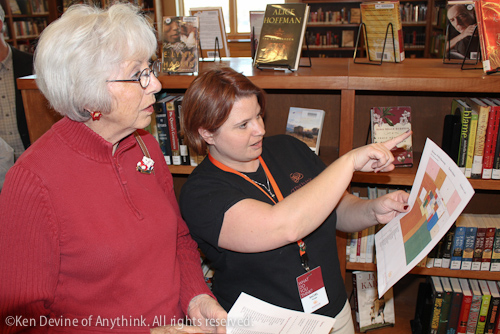 Since the painting over the fabric made it difficult to see, I had also made a map showing where in the piece each person’s fabric was used.
Since the painting over the fabric made it difficult to see, I had also made a map showing where in the piece each person’s fabric was used.
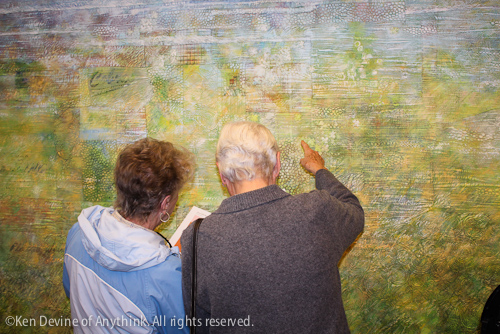 People seemed to be having a great time picking out their fabrics and telling one another about the meaning each piece had for them.
People seemed to be having a great time picking out their fabrics and telling one another about the meaning each piece had for them.
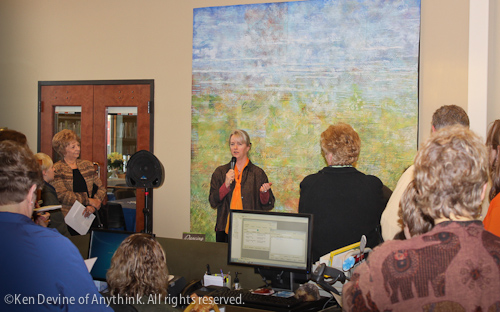 I had to say some “official words.”
I had to say some “official words.”
Then there was an afternoon tea with delightful refreshments, and a chance to talk to some of my new friends once again. The high point of the day was when a young girl asked me for my autograph and had her friend take a picture of us together. I felt like a rock star!

